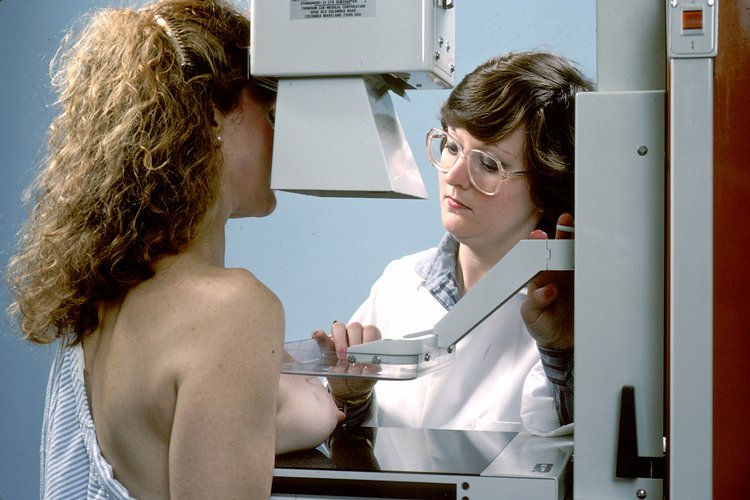At this time, the cause of breast cancer is unknown, so there is no sure way to prevent breast cancer. Strategies that may help prevent breast cancer include avoiding weight gain and obesity, engaging in regular physical activity, and minimizing alcohol intake. The effect of diet on breast cancer risk remains an active area of research. However, no clear link has been found.
As a result of primarily early breast cancer detection (although some have suggest that it is due to improved treatment), the death rate from breast cancer is 24% lower.
The American Cancer Society recommends women receive an annual mammogram beginning at age 40. Numerous randomized trials have shown that mammography reduces the risk of dying from breast cancer. Early detection also leads to a greater range of treatment options, including less-aggressive surgery (lumpectomy vs. mastectomy) and less-aggressive adjuvant therapy. Breast cancer size at the time of diagnosis is an important factor. Regardless of tumor grade and nodal status, patients with breast cancers less than 1 cm in size have a 20-year survival rate of approximately 87% (Tabar L., Two-County Swedish trial).
If a woman is in a high risk category, screening can be started 10 years earlier. For instance, if your mother’s breast cancer occurred at an age before 40, we start screening 10 years before that age. However, we usually don’t start screening before age 25.
A mammogram is a low dose X-ray of the breast. Every mammogram is unique. No two women have the same appearance on mammography. The breasts are made up of a mixture of fat and glandular elements. The less fat and the more glandular elements create an image of a denser breast. The denser breast tissue decreases the sensitivity of the mammogram for finding the cancer. Mammography has an overall sensitivity for finding cancer of 80%. Digital type mammograms have improved sensitivity in the dense breast. Computer aided detection also gives an "edge" to finding breast cancer and serves as a second set of eyes marking suspicious areas for the Radiologist who reads the mammogram.

Mammography does have its limitations. Even with the use of mammography (the best method for detecting early breast cancers), breast cancers will be missed. Not all breast cancer will be detected by a mammogram, and some breast cancers detected by mammography may still have a poor prognosis. Also, a small percentage of breast cancers found by screening, particularly ductal carcinoma in situ, would not have progressed and the treatment may be unnecessary.
Your risk of being called back for additional images after a screening mammogram is overall 10% or less. Only 10% of these returning women will then be recommended for a biopsy. The majority of those women called back will subsequently be given a benign diagnosis or asked to return in 6 months to follow up a finding which is almost certainly benign. In addition, approximately 70-80% of all breast biopsies turn out to be benign.
To be a good screening test, the test must prove that it saves lives, be of low risk and low cost. At the present time mammography is the best screening test we have that meets these criteria and potentially finds a cancer at an earlier stage.
About Dr. Napoletano
About Dr. Napoletano
Dr. Napoletano received her Doctor of Medicine in 1989 from the Temple University School of Medicine. She currently serves as a Diagnostic Radiologist and Director of Breast Imaging at the Breast Center at the Helen F. Graham Cancer Center, Christiana Care Health System. She is a Delaware Breast Cancer Coalition (DBCC) Board Member and sits on the advisory committee for the Christiana Care Health System Center of Excellence for Women.


Tidak ada komentar:
Posting Komentar